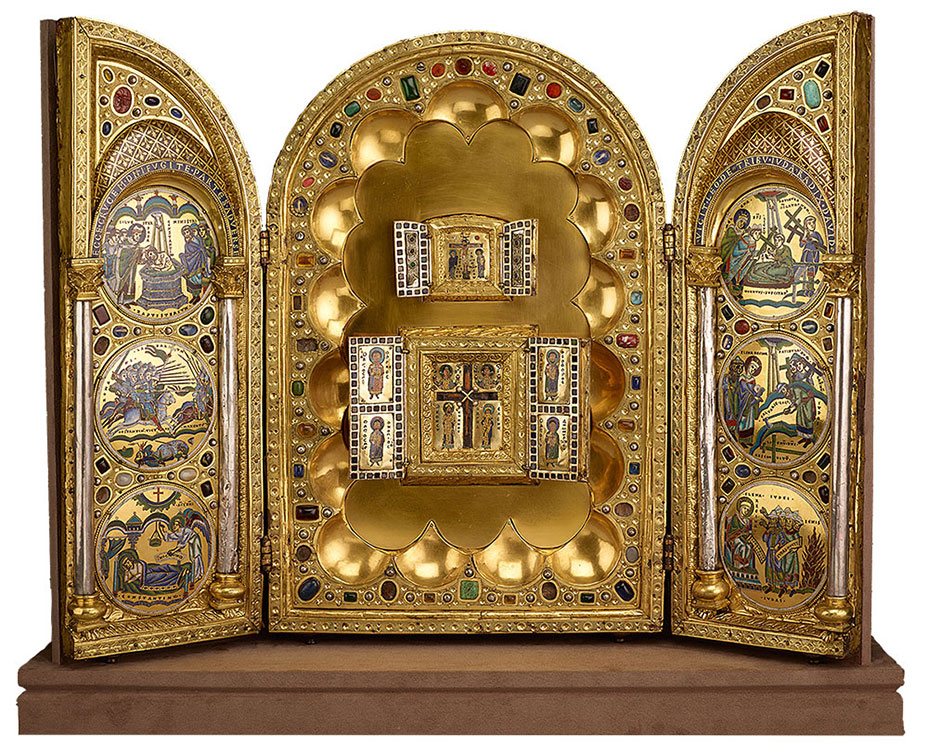
Triptych containing two small Byzantine triptychs on the center panel. Meuse River Valley.
Ca. 1156–58
Wood panels with copper-gilt frames, silver pearls and columns, gilt-brass capitals and bases, vernis brun domes, semi-precious stones, intaglio gems, beads, champlevé and cloisonné enamels
19 inches (484 mm) x 26 inches (660 mm)
Purchased by Pierpont Morgan, 1910
Joshua O’Driscoll, Associate Curator of Medieval and Renaissance Manuscripts
According to legend, the True Cross, on which Christ was crucified, was discovered in Jerusalem by St. Helena (ca. 255–330), mother of Constantine the Great (ca. 272–337), the first Roman emperor to convert to Christianity. Helena brought the cross to Constantinople, where for centuries it served as the source for precious gifts from the Byzantine emperors. Abbot Wibald of Stavelot (d. 1158), in modern-day Belgium, commissioned this triptych. Wibald traveled to Constantinople in 1155 to 1156 to negotiate a marriage for Emperor Frederick Barbarossa, and the two small triptychs on the center panel were likely gifts acquired on that diplomatic mission.
The lower reliquary features splinters of wood arranged to form a cross. The upper reliquary contained a pouch with a fragment of the Virgin Mary’s garment and dirt from the Holy Sepulcher in a cavity. These relics are now preserved separately.
The wings of Wibald’s triptych feature enameled scenes of exceptional quality depicting the Legend of the True Cross. The story begins at bottom left, with Constantine having a vision of the cross in his sleep. Above, he defeats his rival Maxentius, using the cross as his battle standard. Constantine then accepts Christianity and is baptized by Pope Silvester. The three roundels on the right side tell the story of Empress Helena and her discovery of the True Cross. From the bottom, they show Helena interrogating the Jews, discovering three crosses, and then identifying the True Cross through the miraculous resurrection of a dead youth. Implicit in these roundels is the idea that Jews were responsible for Christ's crucifixion, a link which has had a devastating effect on Jewish communities for centuries.
